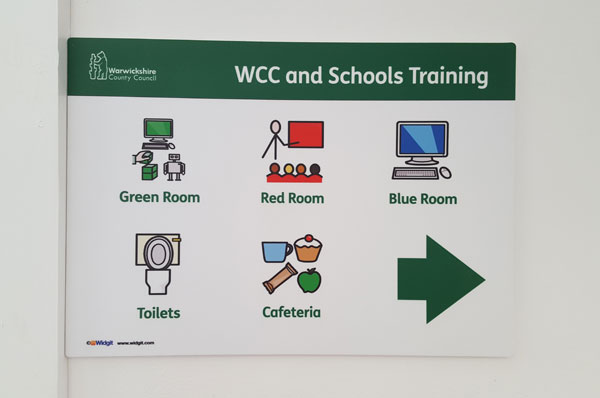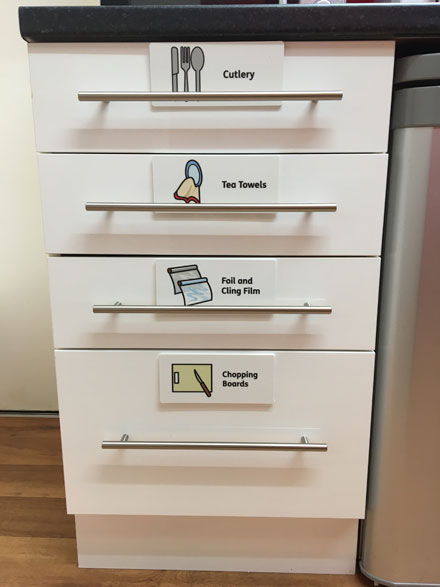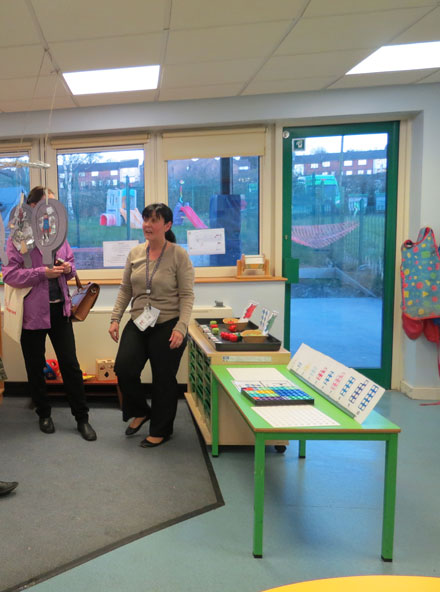- You are here:
- Home
- About Symbols
- CFEs
- What are Symbols?
Communication Friendly Environments (CFE)
Guide

A Communication Friendly Environment enables learners (pupils) to develop their social, emotional and academic potential by reducing or removing barriers to communication.
Surroundings that eliminate or minimise barriers to the sending and receiving of information, successfully enable children to develop their academic, social and emotional potential.
There are three stands to creating a Communication Friendly Environment:
- Visual support systems currently in place around the site
- Staff communication
- Classroom environment
Visual support




Labels and instructions
All labels, instructions at eye level height therefore easily seen.
Written instructions have language that is simple and unambiguous. Examples:
- Entry procedure
- Push/pull on doors
- No food
- No entry
- Fire procedure
Toilets
Where possible all the above are supported by visual prompts signs/symbols/photographs
Entrances
All entrance foyers have:
- Photographs of staff with names
- Information boards, organised and accessible, with consistent colour coding for categories
Directions
Clear directions to specific areas, e g Reception, Library
- Coloured arrows indicating the direction to specific areas
- Consistent colour coding followed
Map of school site available with:
- Consistent colour coding
- Door to each area/room displaying photograph /name of teacher(s)
Room/area organised into areas, consistent colour coding followed.
Routines and Timetables
Routines displayed and utilized, supported by visual prompts e g
- Structure of the whole day /lesson
- Coming into the classroom
- Getting ready for P.E.
Visual Supports
Visual and tangible aids used to support spoken language in a range of contexts e.g. real objects, signs/symbols, photographs.
Communication

The teacher adapts their presentation according to the environment and situation:
- Uses appropriate posture
- Makes appropriate eye contact
- Uses appropriate facial expressions
- Uses appropriate natural gesture
- Uses appropriate volume and intonation
- Uses appropriate speed and pace
- Concrete objects are used to support spoken language
- Symbols are used to support spoken language
- Time is given before expecting a response
- The length of instructions are appropriate
- The level of complexity of the language used is appropriate
The Environment

- There is a good acoustic environment
- Materials and resources for tasks are readily available
- There are clear defined spaces/areas for personal equipment and belongings
- There is sufficient space for the children to sit and move comfortably
- There are quiet areas within the classroom that can be used as a low distraction workplace
- There is sufficient space on the table for children to work
- The table layout supports good working
- All equipment is easily accessible
- There is good light
- The light source is in front of the teacher
- The tables and seat are the correct size and height
- The temperature is comfortable
- Are there any auditory distractions? (heater/toilets/kitchen)
- Are there any visual distractions?
Intro home | Next - CFE's in Warwickshire
